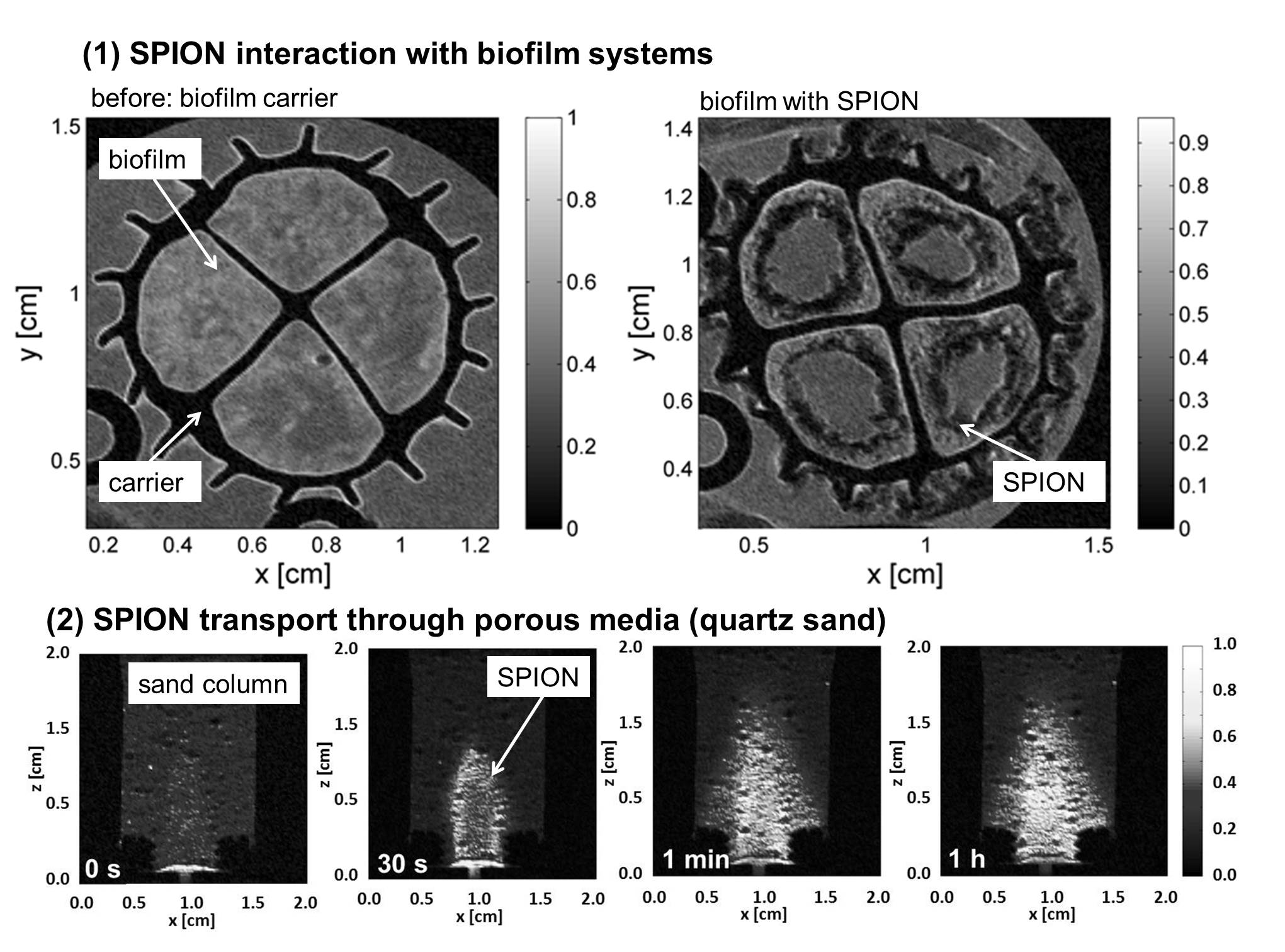Assessing the Behavior of Nanoparticles in Biotechnological and Environmental Systems with MRI
- 1. KIT- Karlsruhe Institute of Technology, EBI, Chair of Water Chemistry and Water Technology, Karlsruhe, Germany
- 2. KIT- Karlsruhe Institute of Technology, Pro2NMR, MVM and IBG-4, Karlsruhe, Germany
The increasing application of nanoparticles in consumer products and industry inevitably contributes to their release into the global water cycle as pollutants1. The nanoparticles' fate in technical and environmental systems is crucial with respect to the potential harm for ecosystems and human beings. Super paramagnetic iron oxide nanoparticles (SPION) are often applied in fundamental research as well as in biomedicine as contrast agents in Magnetic Resonance Imaging (MRI) for therapy, diagnostics and system characterization2. In the field of environmental science, the application of SPION can help to investigate the behavior and fate of nanoparticles3. In this study differently coated and sized SPION were applied as model compounds to trace the nanoparticles' behavior in two different environmental systems: (1) Investigation of the interaction and transport of nanoparticles in technical biofilms from wastewater treatment and (2) Investigation of the mobility of nanoparticles in a water-saturated porous medium. Study (1) revealed that the interactions between SPION and the heterogeneous biofilm requires hours until penetration occurs. The sorption mainly occurred at the outer biofilm layers (Figure 1). The penetration depth in the biofilm depends on the particle size, and the sorption is irreversible after 14 d of exposure emphasizing that contact time matters. For inorganic porous media (2) MRI allowed a detailed visualization of the distribution patterns of SPION in the column. SPION mobility especially depends on the SPION surface properties (Figure 1)4. The approach of using MRI leads to a detailed observation of nanoparticle transport in environmental and technical systems and provides experimental information about mass flows needed for simulations.

[1]
[2]
[3]
[4]
- [1] Delay, M., Frimmel F. H., (2012), Nanoparticles in aquatic systems, Analytical and Bioanalytical Chemistry , 402(2): 583-592.
- [2] Lu, A. H., et al., (2007), Magnetic nanoparticles: Synthesis, protection, functionalization, and application, Angewandte Chemie International Edition , 46(8): 1222-1244
- [3] Baumann, T. and C. J. Werth, (2005), Visualization of colloid transport through heterogeneous porous media using magnetic resonance imaging, Colloids and Surfaces a-Physicochemical and Engineering Aspects, 265(1-3): 2-10
- [4] Cuny, L., et al. , (2015), Magnetic resonance imaging reveals detailed spatial and temporal distribution of iron-based nanoparticles transported through water-saturated porous media, submitted to Journal of Contaminant Hydrology
